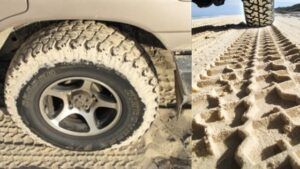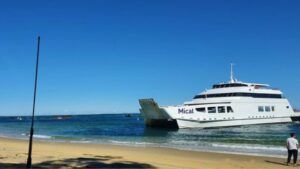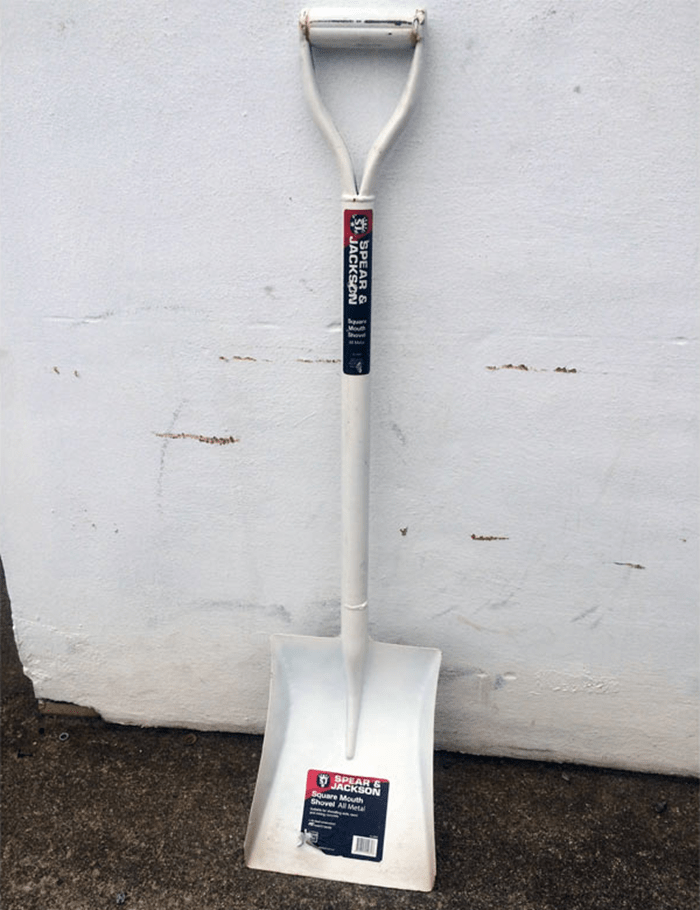Driving on the beach is a lot of fun, but knowing the basic essential skills of beach driving will help to ensure you enjoy your trip. Driving on sand is a very different experience to driving on the road. Once you head off the pavement, conditions will vary greatly.
FleetCrew has created this beginner’s guide to advise you on the dos and don’ts when driving on sand. Queensland has some of the best beach driving tracks in the world. The endless beaches and numerous islands provide excellent drives and holidays. If you are heading out for a vacation on K’gari (Fraser Island), Mulgumpin (Moreton Island), or Minjerribah (Stradbroke Island), knowing these basic tips can help you avoid getting stuck.
Read all about the specific 4WD safety tips in more detail below.
Queensland has some amazing beaches, but you’re not allowed to drive on all of them. Most beaches that you are allowed to drive on require a permit. It’s important to do your research when planning your trip to find out if you require a permit.
For more information on permits and how to obtain them, please visit the Queensland Parks and Forests website. If you are traveling interstate, please check the relevant state’s website for details. Please note, FleetCrew cannot organise permits for you.
The first step to avoid getting into trouble while driving on sand, is to be continually conscious of your safety and the safety of your passengers. The Department of Environment, Science and Innovation give the following suggestions on how to stay safe:
Beach driving conditions can change quickly. Incoming tides can reduce driving space and force vehicles into soft, unstable sand towards the dunes. A common challenge faced while beach driving is getting bogged down. The easiest ways to avoid being bogged down is to drive at low tide near the shoreline, where the sand is dark and flat. The harder sand between the waterline and the high tide mark will have the firmest surface. Do not drive too close to the waterline to avoid being hit by unexpected larger waves. It’s best to drive on the beach when it is 2 hours either side of low tide and do not drive 2 hours either side of high tide. You can check tide times on the Bureau of Meteorology website.

It is standard practice to reduce tyre pressure while beach driving. The reason for this is it increases the size of the footprint of the tyres on the sand, resulting in the weight of the vehicle spreading across a larger area. By spreading the weight, the tyres are more likely to drive over the top of the sand rather than digging down into it and causing the vehicle to get bogged. The increased footprint will also increase traction. According to specifications by Cooper Tyres, tyre pressure for sand driving using their all-terrain and mud 4×4 tyres, can be between 18-26 psi.

Remember, if you are travelling to K’gari (Fraser) or Mulgumpin (Moreton), you will need to deflate your tyres on the ferry, as you will be driving straight onto the beach. The ferry for Minjerribah (Stradbroke Island) will drop vehicles off on a sealed road so do not deflate your tyres until you reach the beach.

Please note there are risks associated with lowering the tyre pressure and often the reduced tyre pressures for varying terrain are below the vehicle manufactures recommendations. The lowering of pressures below the vehicle manufactures recommendations is at your own risk and in some instances can cause insurance claims to be void. To minimise the risks while driving with reduced tyre pressures it is advisable to reduce speed, drive slowly over obstacles and do not make any harsh turns which could result in the tyres coming off the rims. Always re-inflate to proper levels when the vehicle is back on a hard surface.
Hard acceleration and breaking while driving on the beach can cause problems. Rapid braking will push sand in front of your tyres, making it harder to get moving again. The best way to stop is to slow down by taking your foot off the pedal and have the sand’s traction stop the vehicle. To speed up, gently but steadily press the accelerator. Accelerating quickly will result in the vehicle sinking deeper into the sand as the tyres spin.
When driving on an unsealed surface, it is important to maintain momentum. The chances of becoming stuck increase when you head uphill. Drivers should be aware of changes in the terrain ahead of them and judge if changes in speed or power are required to maintain momentum.
Remember, that when people constantly get stuck in the same spot, the soil and sand in that area gets kicked up and becomes loose. The loose sand exponentially increases the chances of becoming stuck. Keep levelheaded, don’t simply accelerate, and keep your speed and momentum whenever going through loose sand or going up an incline.
At the very minimum you should always have the following tools:
Recovery kits are available for hire with your hire vehicle. Please request these prior to pick up.
Tow ropes and snatch straps should only be used by trained operators using appropriately safety-rated equipment.



If you become bogged down, you need to increase your traction. Greater traction can be achieved by following these steps:
The safety of passengers and drivers are the most important. Call and ask for help. If you are on K’gari (Fraser Island), Mulgumpin (Moreton Island) or Minjerribah (Stradbroke Island), experienced four-wheel drivers are likely nearby. The code of conduct among the four-wheel driving community is to assist other drivers who need help. 4WD recovery techniques require a certain level of expertise and experience. There have been multiple documented deaths as a result of mishandled recoveries that have been attempted to a free a vehicle using the tow ball. DO NOT USE A TOW BALL OR BULL BAR FOR RECOVERY. If digging, pushing, and a couple of Maxtrax are not going to get you free, ask someone who has been trained to use ‘Snatch Straps’ for help.
If you’re new to four-wheel driving, stick to routes that are easy to manoeuvre and safe. Avoid heading out to remote places and always have a way to contact local authorities if you are in an emergency.
Dial 000 in a life threatening emergency, even if your mobile provider does not have network coverage in the area. Your call to 000 will be carried on any available mobile network, however, you must be in the coverage area of one of the mobile providers in Australia to make emergency calls.
You can also download the Emergency+ App, the app uses GPS functionality built into smartphones to help 000 operators determine your location in an emergency.
Additional driving tips and resources which are handy if you’re driving on the beach:
Enjoy the Ride!
If you have an enquiry or would like more information then please fill in the enquiry form and we will get back to you asap during business hours.
If you are seeking a quote for a particular vehicle/s, please visit our Get A Quote page or if want to further information, please visit our FAQs page.
Providing 4WD Hire Vehicles in QLD and the Eastern States
Monday – Friday: 7.30am – 5.00pm